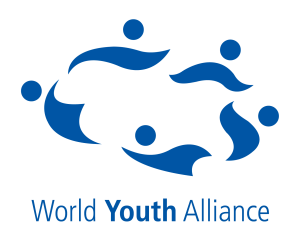
In the last article, I have shown what the social consequences would be if a country legalized euthanasia. Now, I will examine a more factual question – is there a legal basis for claiming a “right to die”?
No matter how closely we examine international law documents, we cannot find the “right to die” there. From the ordinary meaning of human rights documents, it is impossible to derive such a right. On the contrary, all of the most relevant human rights documents mention the “right to life” and call upon the States to protect this right. This is also consistent with what we considered in the last article: that a society cannot rest upon principles which explicitly contradict each other. The consequences would be too severe in this case.
As of writing, euthanasia is legal in the Netherlands, Belgium, Colombia, and Luxembourg. Assisted suicide is legal in Switzerland, Germany, Japan, Canada, and in some US states. On the other hand, there are 193 countries members of the United Nations, most of which accept foundational human rights documents that protect the right to life.
International Conventions
Article 3 of the Universal Declaration of Human Rights states that “Everyone has the right to life, liberty and security of person.” The Declaration is politically concretized by several legally binding UN treaties: International Covenant on Civil and Political Rights (ICCPR), Convention on the Rights of the Child (CRC) and Convention on the Rights of Persons with Disabilities (CRPD).
ICCPR doesn’t mention a “right to die,” and in Article 6 states that “Every human being has the inherent right to life. This right shall be protected by law. No one shall be arbitrarily deprived of his life.” Similarly, Article 6 of CRC says that “every child has the inherent right to life.” Article 10 of the CRPD is even more clear: “States Parties reaffirm that every human being has the inherent right to life and shall take all necessary measures to ensure its effective enjoyment by persons with disabilities on an equal basis with others.” This particular concern for persons with disabilities is echoed in the CRC. Article 23 of the CRC asserts that “a mentally or physically disabled child should enjoy a full and decent life, in conditions which ensure dignity, promote self-reliance and facilitate the child’s active participation in the community.”
These documents highlight the strong protections for vulnerable groups such as the elderly and persons with disabilities, who are typically the people most affected by euthanasia laws.
UN treaty monitoring bodies, which provide comments and recommendations to countries on meeting their treaty obligations, have condemned the practices of euthanasia several times. The UN Human Rights Committee formally condemned the Dutch euthanasia of infants sanctioned under the “Groningen Protocol”: “The Committee is gravely concerned at reports that new-born handicapped infants have had their lives ended by medical personnel.” Also, the Concluding Observations of the Human Rights Committee on the Netherlands from 96th session in 2009, state: “The Committee remains concerned at the extent of euthanasia and assisted suicides in the State party[.] The Committee reiterates its previous recommendations in this regard and urges that this legislation be reviewed in light of the Covenant’s recognition of the right to life.”
In the same manner right to life is recognized in numerous other human rights documents, such as: the European Charter of Fundamental Rights (Article 2), the European Convention on Human Rights (Article 2), the African Charter of Human and Peoples’ Rights (Article 4), and the American Convention on Human Rights (Article 4). Equally, none of these documents mentions a “right to die.”
European Legislative Framework
The Parliamentary Assembly of the Council of Europe (PACE) in Resolution 1859 (2012), paragraph 5, offers a very clear position regarding euthanasia: “Euthanasia, in the sense of the intentional killing by act or omission of a dependent human being for his or her alleged benefit, must always be prohibited.” This Resolution was further brought “to the attention of member States, with a request for implementation” by the Recommendation 1993.
Similarly, PACE Recommendation 1418 (1999) in the paragraph 9 states that:
the Committee of Ministers encourage the member States of the Council of Europe to respect and protect the dignity of terminally ill or dying persons in all respects:
…c. by upholding the prohibition against intentionally taking the life of terminally ill or dying persons, while:
i. recognising that the right to life, especially with regard to a terminally ill or dying person, is guaranteed by the member states, in accordance with Article 2 of the European Convention on Human Rights which states that “no one shall be deprived of his life intentionally”;
ii. recognising that a terminally ill or dying person’s wish to die never constitutes any legal claim to die at the hand of another person;
iii. recognising that a terminally ill or dying person’s wish to die cannot of itself constitute a legal justification to carry out actions intended to bring about death.

PACE recommendations and resolutions are important because European Court of Human Rights (ECHR) has to take them as guidance in its rulings. Recommendation 1418 is also quoted in the European Court of Human Rights case Pretty v. United Kingdom from 2002, where the ruling explained that Article 2 of the Convention “cannot, without a distortion of language, be interpreted as conferring the diametrically opposite right, namely a right to die; nor can it create a right to self-determination in the sense of conferring on an individual the entitlement to choose death rather than life. The Court accordingly finds that no right to die, whether at the hands of a third person or with the assistance of a public authority, can be derived from Article 2 of the Convention.”
In the same case, the ECHR has also held that the first sentence of Article 2 (1) obliges the State not only to refrain from the intentional and unlawful taking of life, but also to take appropriate steps to safeguard the lives of those within its jurisdiction. Thus, if there exists a positive obligation on the State, it is not to facilitate suicide, but to protect life.
Under Article 2 of the Convention, the ECHR also considered the “right to die” in the case of Sanles Sanles v. Spain, where the ECHR dismissed the application as inadmissible. The case was later brought to the Human Rights Committee under the Optional First Protocol, where it was again dismissed as inadmissible.
Similarly, judgement in the case Haas vs. Switzerland from 2011 clearly rejected the claim to the “right to die”: “Article 2 [of the Convention] guarantees no right to die, whether with the assistance of a third party or of the State; the right to life has no corresponding negative freedom.” The case Gross vs. Switzerland from 2013 also failed to establish the “right to die” as a privacy right under Article 8 of the Convention.
Adequate alternative
The fact that there is no “right to die” in the international law doesn’t mean that there is no solution for the terminally ill or suffering patients. PACE in the Recommendation 1418 (1999) upholds the prohibition against intentionally taking the life of terminally ill or dying persons, but also recognizes the alternative: “To provide equitable access to appropriate palliative care for all terminally ill or dying persons” (§ 9.)
In the Resolution on palliative care, adopted on 29th of January 2008 by the PACE; “Palliative Care: A model for innovative health and social policies Resolution 1649 (2009)” the report states clearly the need for the development of palliative care in all European countries, to make palliative care available for all patients with life threatening diseases who need it. However, the report does not only support palliative care as a comprehensive approach for severely ill and dying patients. It commends palliative care as an innovative new way, which can be used as a model for other areas of health care.
For this reason, in the next article I will examine palliative care as an appropriate response to achieve highest attainable quality of life for suffering and terminally ill patients.
Written by Hrvoje Vargić, WYA Europe Regional Director







